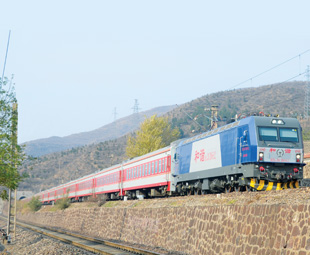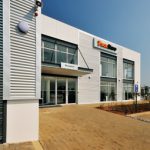Setting SA’s railroads in train?

It’s no secret that the South African government wants to restore rail transport to its former glory, or even surpass it. But will the plans work? JACO DE KLERK takes a look at some of these tactics and at a country that’s managed to develop its railroads for the greater good …
According to FOCUS assistant editor Gavin Myers, as reported in his review of the Minister of Finance Pravin Gordhan’s 2014 Budget Speech in our March edition, government spend on infrastructure and development will amount to R847 billion over the next three years. Of this, R347 billion will be allocated to transport and logistics (with R425,7 billion already having been spent over the last four years).
“Perhaps unsurprisingly, rail features strongly within this,” writes Myers. “As reported by Business Report, government will increase spending on rail infrastructure by 20 percent a year. Transnet has upped capacity on its coal lines and plans are in place to extend its coal, iron and manganese lines,” he relates.
“The Passenger Rail Association of South Africa (Prasa) also refurbished 500 Metrorail coaches in 2013, and its new procurement plan is underway with R22,8 billion allocated to upgrading commuter rail services over the next three years.”
However, as Barloworld Transport Solutions’ CEO, Neil Henderson, notes: “The proportion of commercial freight tonnage transported by road in South Africa has steadily increased over the last ten years to approximately 89 percent today.”
He adds that this increase is mainly due to fluctuating and increasing needs of South Africa’s supply chains and a number of challenges faced by the national rail operator; such as low service levels, lack of flexibility and capital investment delays.
“This puts an enormous strain on the road infrastructure, much of which is already in a bad state of repair, and results in increased traffic congestion and higher vehicle maintenance costs,” Henderson points out. “The impact of this is an increase in travel distances, resulting in longer turnaround times, and reduced overall supply chain efficiency.”
He highlights that other transportation challenges include volatile fuel prices, toll costs, stricter carbon requirements, lack of policies and poor coordination among government departments and their agencies … So it would seem that the call to shift freight from road to rail, especially for bulk transport, is justifiable.
You can’t just throw money at a problem, however, and hope that it improves … it is better to first take a look at a successful example.
“Railway development in China over the past 25 years provides ample examples of what can be achieved when it comes to modern railways,” says Bruce Evans, railway consultant at GIBB – an engineering consulting firm. “Some aspects of China’s railway solutions could be applicable to South Africa and are worth considering – in particular for a new Durban-Gauteng high-standard, standard-gauge railway.”
When he first visited China in 1989, Evans (a professional civil engineer who has spent most of his 40-year working life on new railway projects) concluded that, in general technical terms, the Chinese railways were about 15 years behind South Africa’s railways. “At the time, China still used many steam locomotives, only a few mainlines were electrified, and little in the way of long-welded railway tracks were in place, with railway maintenance being labour intensive,” he adds.
Today, however, Evans says China is well ahead of South Africa on many technical developments. “China has undergone massive economic development and the government recognised that a sophisticated railway system was critical. Massive investment was ploughed into the system and development continues at extraordinary pace.”
Between 1989 and 2013, China’s public railway system grew from around 60 000 to 100 000 km and, on average, between 200 and 400 km of new lines continue to be added each month. This has led to the country’s railway network now being the world’s second largest.
Most of China’s older key double-track, mixed-traffic mainlines have also been steadily upgraded since 1995 to allow for 160 to
250 km/h passenger, and 120 km/h freight train operation on the same lines; with the new high-capacity, mixed-traffic mainlines adopting the same standards.
Other key corridors are adopting increased vertical clearance standards to allow for the movement of high-profile freight traffic, in particular double-stack container trains and, possibly, also multi-deck motor vehicle trains. Essentially, these trains require a standard-gauge line with a vertical clearance for bridges and tunnels of about three metres higher than most existing railways allow.
Evans, however, believes this type of line – freight and passenger with clearance provision for double-stack container trains – merits close examination as a possible model for the proposed new Durban-Gauteng line.
“Anyone travelling on the N3 freeway between Johannesburg and Durban cannot fail to notice the large numbers of trucks transporting containers and new motor vehicles,” he points out. “Studies predict that the movement of containers on this corridor is going to grow significantly over time – by as much as 400 percent over the next 25 years!”
Evans adds: “For technical reasons, double-stack container trains cannot be operated on the existing railway in this corridor. Construction of a new line, allowing this, would be of a much higher standard and, thus, shorter and should cut the cost of container movement. This will significantly help to boost the country’s trade competitiveness and cut the costs of doing business.”
Evans points out, however, that the present plan for rail in the Durban-Gauteng corridor isn’t clear. “Several government sources appear to favour a dedicated passenger high-speed, standard-gauge railway. On the other hand, there have been recent calls for a high-standard freight line that can accommodate double-stack container trains.”
He adds: “Proponents of the freight line proposal suggest that passenger transport could be left mostly to the airlines and roads. China is showing that, with some compromises, it is possible to build a high-standard modern railway that can handle both forms of traffic.”
To Evans, a high-standard, mixed-traffic mainline, rather than a passenger- or freight-only line, along the Durban-Gauteng corridor, potentially offers several advantages. Container, automotive and other suitable freight traffic would be encouraged to move to rail as a higher quality of service would be available – leading to safer roads, lower transport costs as well as energy efficiency and carbon-emission benefits.
“Some passenger traffic would move from air and road transport to rail transportation, improving road travel safety, providing access to more affordable transport and leading to further energy and emission benefits,” he emphasises. “Such a line would also reduce the need to expand air and road transport infrastructure on this corridor.”
Evans continues: “A new railway linking Durban and Gauteng would probably take at least 15 years to implement. It would probably be the largest single transportation project ever undertaken in the country and it would require major investment. Such a project would provide a once in 50 to 100-year opportunity for the country’s most important transport corridor.”
He says that the necessary feasibility and planning studies would have to be robust and rigorously validated to ensure maximum benefits are obtained for South Africa.
Our country’s rail industry still has a way to go if it wants to surpass China on the rail front ever again – or at least reach the same level of efficiency. But this will benefit South Africa only if the funds allocated to the infrastructure spend are managed wisely, and all modes of transport are given their rightful place in the economy …
Published by
Focus on Transport
focusmagsa




